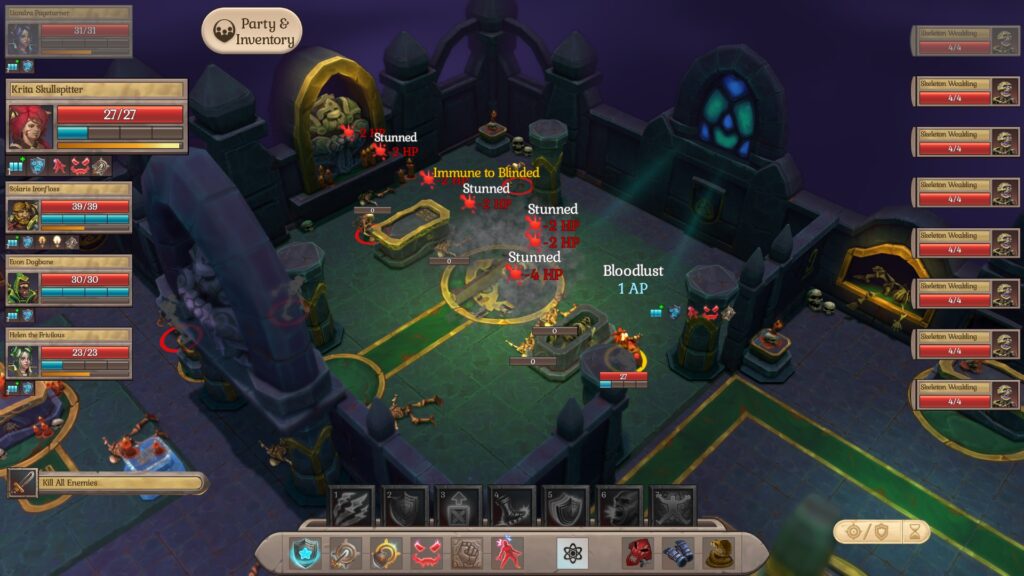
After a successful Kickstarter campaign in 2017, followed by an equally fruitful launch on Steam Early Access, Fort Triumph has finally received a full release.
While the game openly embraces the XCOM comparisons with its marketing and Steam page, Fort Triumph features a lot of design decisions that set it apart from the popular Firaxis franchise.
The emphasis on physics-based environmental interactions in particular ensure that Fort Triumph is one of the more unique takes on the genre.
Fort Triumph
Developer: CookieByte Entertainment
Publisher: All in! Games
Platforms: Windows PC (Reviewed), Linux, Mac
Release Date: April 16th, 2020
Players: 1-8
Price: $24.99
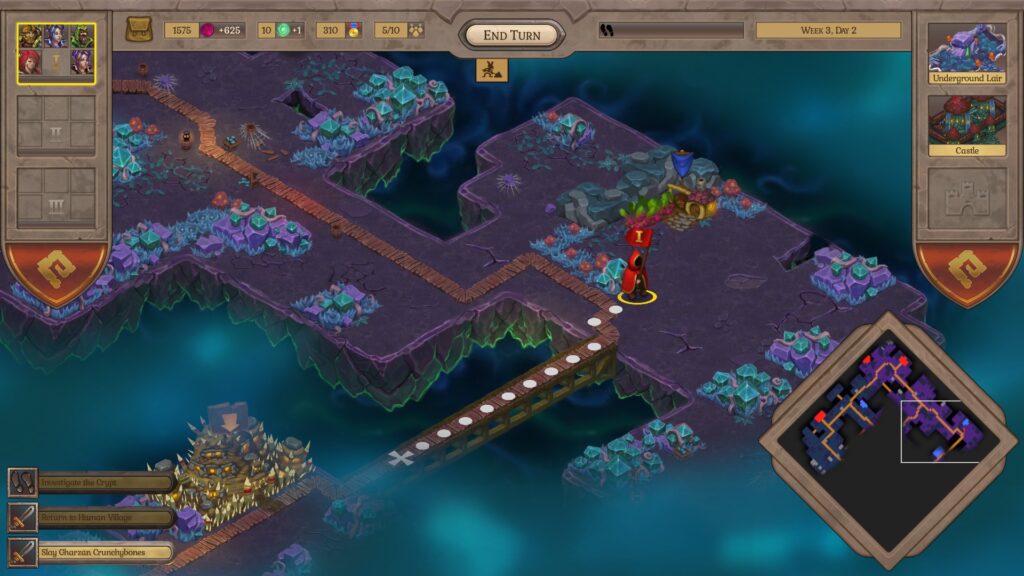
Another game Fort Triumph openly calls out as inspiration is Heroes of Might & Magic. This is because the game is, to an extent, a stripped down and simplified 4X. You’ll be building parties of up to five heroes, and sending them out across procedurally generated maps, with the ultimate goal being the destruction of your enemies.
Each map is full of combat encounters that act as XP fodder for your heroes, as well as neutral structures you can capture to boost your income, chests that contain useful consumables and artifacts, and various other random events. Some of these events will offer you a powerful boon or item, but the party that accessed it will have some type of penalty for the next few combat encounters.
The game uses three types of resources: money, magic, and renown. Money is spent to purchase structures and upgrades in your towns, as well as to recruit new heroes and form additional parties. Magic is a slightly more scarce resource that is used to buy advanced structures and upgrades. Both can be acquired by capturing structures around the map, upgrading your towns, or through random events.
You can have up to three towns at once. You can’t build new towns, only capture them from enemies. Each town has a variety of structures you can purchase, as well as upgrades to existing structures. The exact type of buildings you have access to depends on the town’s race, though there are a few generic ones that everyone has.

Renown is acquired by winning battles, and is used to purchase guild upgrades. These guild upgrades enhance your heroes in different ways. For example, you can increase their number of items slots, reduce the cooldown on abilities, upgrade their weapon and armor tiers, and so on.
If you are looking for a really deep or complex 4X experience, then you really won’t get that in Fort Triumph. The town management is quite limited, and ultimately exists as a form of progression for your heroes.
That’s fine, because Fort Triumph isn’t really trying to be a true 4X. That said, I do wish there were more options in generating each skirmish map. You can customize the number of towns on the map, number of players, and tile sets, but not much beyond that.
While the procedurally generated skirmish maps are where the game’s replayability comes from, Fort Triumph does have a single player campaign with a story. This campaign also acts as a really lengthy tutorial, so it’s worth starting here before jumping into random skirmish maps.

The campaign’s structure itself is basically like playing through three skirmish maps in a row, but with cutscenes, unique quests, and the ability to carry four of your heroes between maps.
The campaign follows a group of four heroes of dubious competence that decide to start up their own guild. The gang accept a seemingly straightforward quest to drive goblins out of the valley, but after a few double crosses, demonic entities, and ancient artifacts, the group soon realize they may have bit off a little more than they can chew.
Fort Triumph‘s overall tone is a lot like its graphics style: colorful, bright, and more than a little bit goofy. The game doesn’t take itself seriously at all, and its tongue-in-cheek nature is apparent in everything from the cutscenes, to the item descriptions.
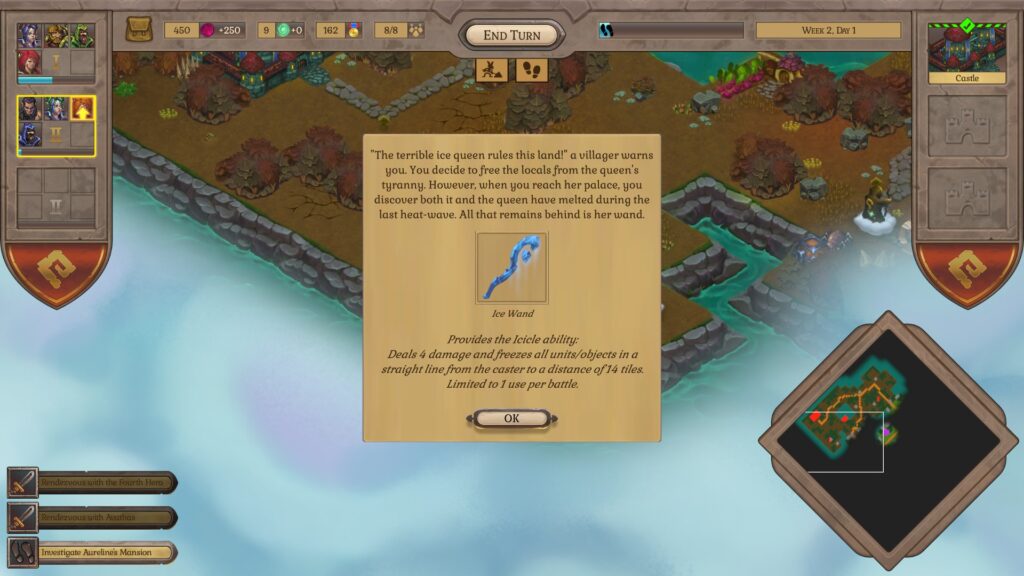
The game’s goofy tone and humor will probably be very hit or miss for most people. Personally, I got a chuckle out of a decent number of the cutscenes. Others, however, definitely dip into cringe territory.
The campaign will probably take most people around 12 to 15 hours to complete, and it does a good job introducing players to the game’s mechanics and concepts. Many of the story missions are also quite fun, and feature objectives and events that you don’t see in your standard battles with nameless mobs on the overworld map.
That’s why it’s a bit sad that only the human faction received a campaign. There’s a few battles where you get to use undead, troll, or goblin characters, but these other three factions don’t have campaigns specifically dedicated to them, which is quite disappointing.
Then again, there really isn’t much difference between the four factions. Each faction has a few racial traits, like how goblins gain extra defense while in cover, or how trolls are too large to take cover, but have larger health pools to compensate. Each faction also has some different town structures that convey unique bonuses that compliment their racial traits.

However, at their core, all four races largely play the same. They don’t even have unique hero classes or skills, meaning that battles with a human party don’t feel especially different than battles with a goblin party.
The campaign also ends very abruptly. You beat the final boss and then it just ends. No cutscenes or any epilogue after the final battle, no real closure to the story, nothing.
This happens in your standard skirmish maps as well. You get a little “you win” popup message, and then are kicked back to the main menu. No detailed stat screens or game overviews after the match has ended.
Luckily, the combat is where Fort Triumph really shines, and it’s ultimately what you will be buying the game for. Whenever one of your parties attacks an enemy stack, they will be transported to a procedurally generated map. Player parties cap out at five heroes, though you’ll often encounter bands of creeps on the map that can far exceed that number.
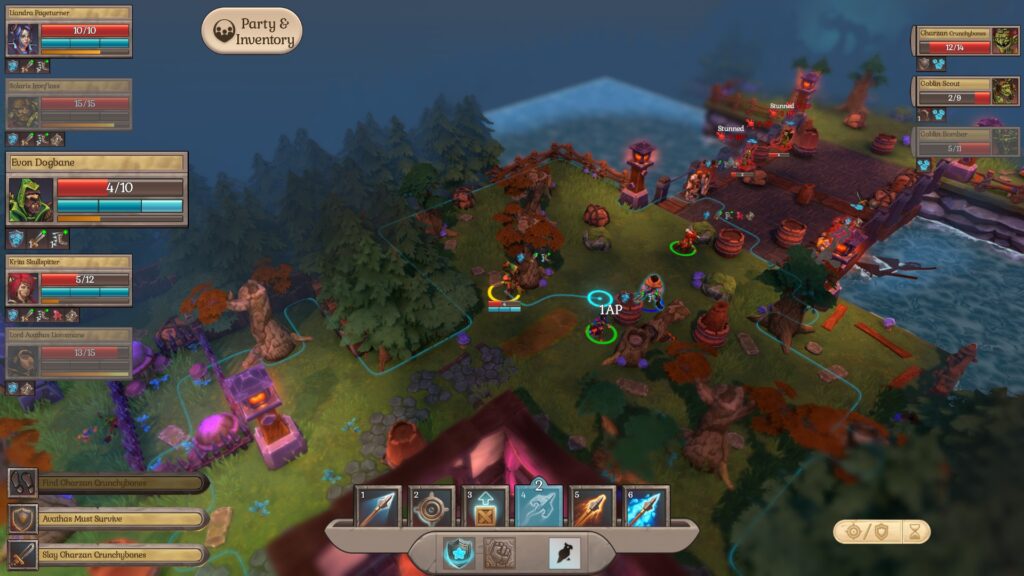
As I said earlier, Fort Triumph takes a lot of inspiration from Firaxis’ XCOM. By default, each of your heroes has three action points that can be used to move around or use skills. The skills are all based on cooldowns, and most usually cost two AP, though there are some that cost one or even zero.
On your turn, you’ll get a chance to move your heroes around the map, which is always conveniently covered in terrain that can be used as cover. Ranged heroes can set up overwatch, and melee heroes can take attacks of opportunity against enemies that leave or move through their melee range.
Sounds pretty much like fantasy XCOM so far, right? Well, what sets Fort Triumph apart from other games in the genre is its focus on physics and environmental hazards.
Every class has skills that can manipulate objects in the environment in some way. The melee classes start out with a mighty kick that can be used to send enemies or objects flying, while a mage can summon a tornado that can do the same at a distance.
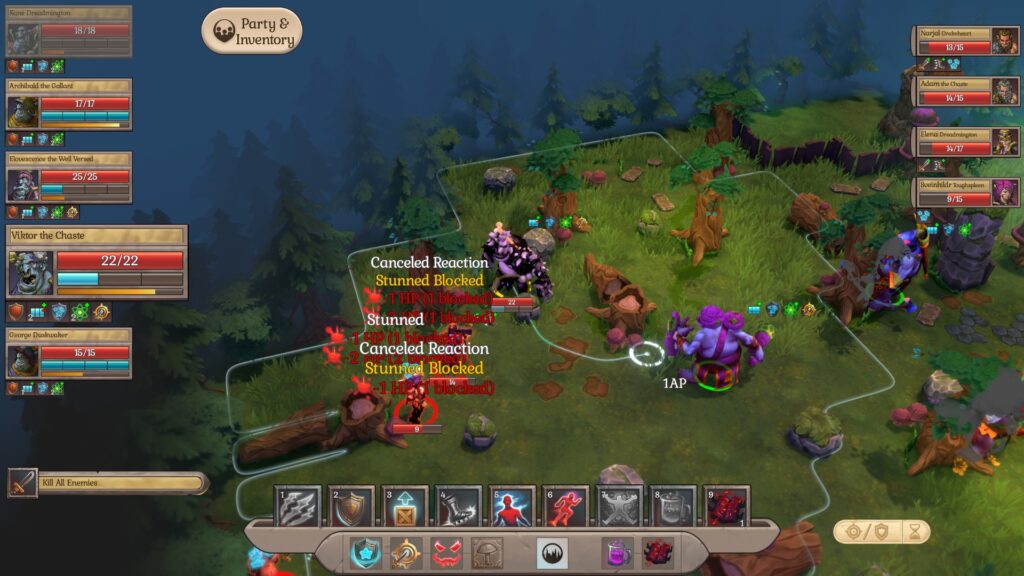
Fort Triumph‘s biggest twist is that every tree, boulder, or stone column that you are using as cover can also be used against you. You can kick down trees to make them fall on the goblin hiding behind them, or use a gust of wind to send a boulder flying into a group of spiders. You can also sling enemies into their comrades, or cause an arch to collapse on the skeletons below it by destroying the pillars holding it up.
Not only does this deal significant damage, but it also stuns the units hit by the object. This adds a completely new dynamic to the game’s otherwise fairly straightforward XCOM-style combat, as you’ll need to think about how the very cover you are hiding behind might be used against you.
You’ll also need to be on the lookout for objects and enemies that are positioned in such a way that you can wrack up a big combo. If you take skills and items that increase a hero’s physics, you can effectively pinball boulders off walls into bunched-up groups of foes. Its immensely satisfying to sling a boulder into a group and stun three or four enemies with a single kick.
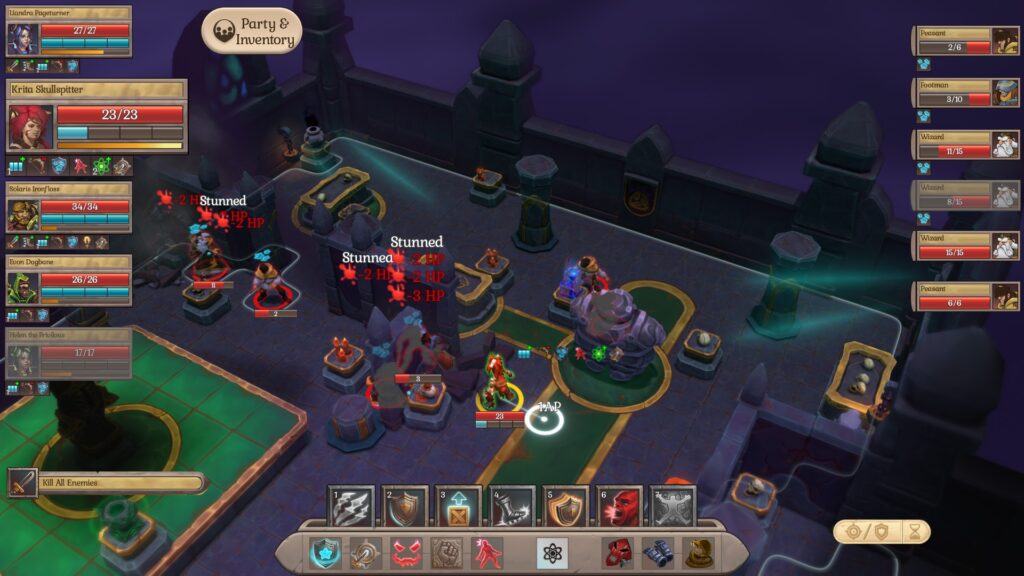
The game has four classes altogether: Paladin, Mage, Ranger, and Savage. While there are only four of them, the game does an admirable job of making them each have a defined role and use.
The Paladin is your melee tank, and can learn a variety of support skills. The Savage is a very mobile melee class focused a bit more on damage and physics-based skills.
The Ranger is a ranged class with a variety of arrow types, like fire arrows, or grappling arrows that can be used to pull enemies closer. Finally, the Mage rounds out the ranged classes, and has access to a nice variety of AOE spells and physics-manipulating abilities.
When your heroes level up, they’ll get skill points that can be used to purchase new abilities, or upgrade existing ones. When you go to purchase a new skill, you’ll be given a choice between three random skills, some of which might be rare or cross over with a different class.
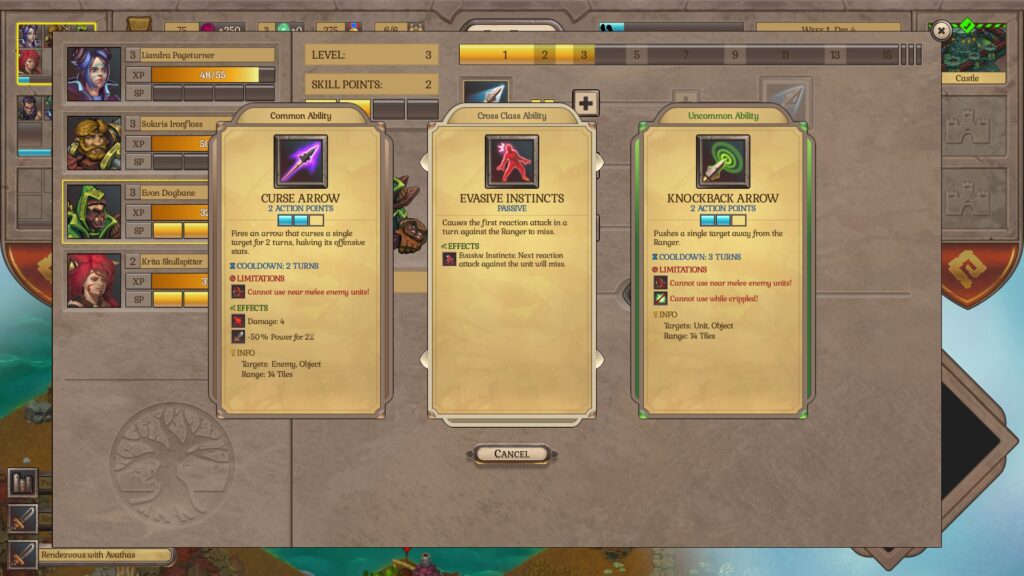
Most skills have two or three upgrades that are locked until the character hits a certain level. Some might be as mundane (but useful nonetheless) as reducing the skill’s cooldown.
The final upgrades for a skill tend to be extremely powerful. Such as turning the Mage’s tornado into a wall that targets everything in three tiles, or allowing you to pick the direction that the Ranger’s grappling arrow sends an enemy in.
You can further upgrade your characters with items. Each character starts with one inventory slot, but can get up to three through guild upgrades. Items range from the lowly health potion, to legendary artifacts that can provide a hero with a powerful skill or stat boost.
While Fort Triumph‘s combat is very fun, it has a few kinks that need to be sorted out. The map’s procedural generation, combined with the inability to pick where your units are placed before battle, can lead to some really awkward placements.
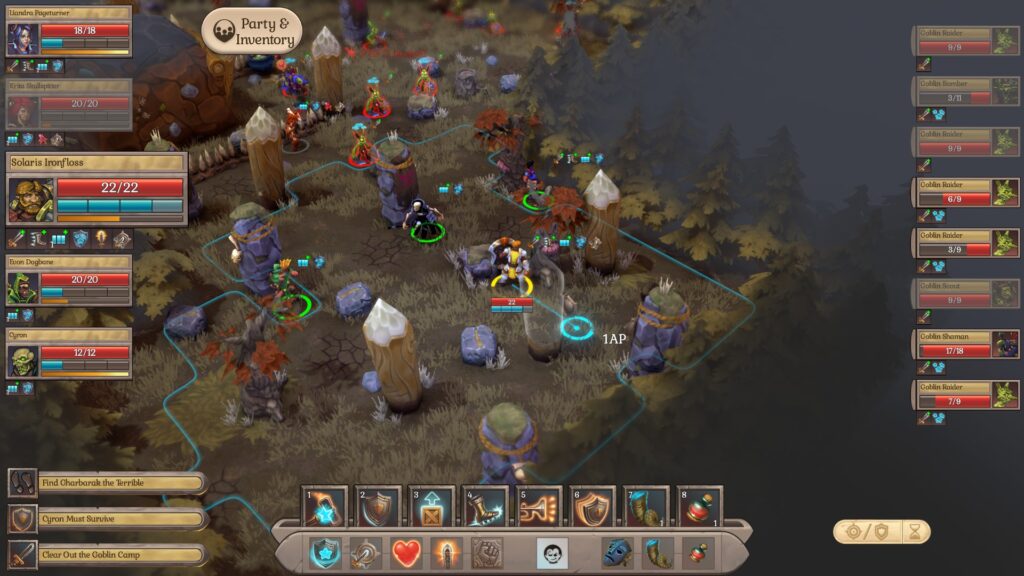
One example that stood out is when one of my towns was attacked and my ballista, which is a stationary defensive unit, was spawned right behind a giant wall. Needless to say, it contributed nothing to that battle.
Another complaint I have is the lack of an auto-resolve feature for battles. Don’t get me wrong, Fort Triumph‘s combat is great, but battles can be moderately time consuming.
This becomes quite apparent in the later stages of a map when your parties are a moderately high level with good skills and equipment. Sometimes, you just don’t feel like playing through a really one-sided battle against a low level band of monsters guarding some appetizing loot on the map.
Fort Triumph also has some pretty bad performance and stability issues. I’ll admit, I don’t exactly have the beefiest gaming PC out there, but there really isn’t any reason why a game like this regularly dips to 30 FPS or below on a GTX 1070. It happens quite regularly in combat, and there isn’t any specific thing that seems to trigger this.
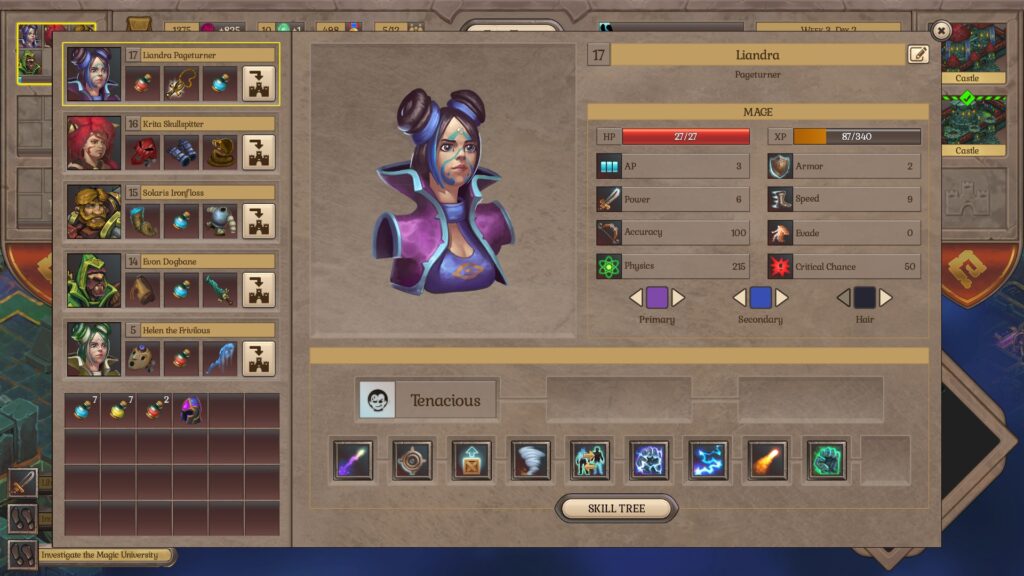
The AI also bugs out from time to time, and I suspect it might have something to do with the low framerate. Sometimes when the framerate becomes particularly unstable, the AI will pause for up to five seconds between moving each unit. This is particularly annoying if you are raiding a spider nest, because the enemy might have a dozen of the buggers to cycle through.
Glitches aside, the AI is generally pretty decent. Even on the normal setting they won’t hesitate to exploit some poorly-positioned heroes with a perfectly aimed boulder kick. On the skirmish map they also do an admirable job of picking and choosing their battles, and usually don’t try attacking a town that is too heavily defended for their party to take on.
One thing to note is that Fort Triumph also lacks any sort of competitive multiplayer. There is a local co-op mode that supports Steam Remote Play, but no competitive multiplayer. The developers have stated that its unlikely that the game will ever get such a mode due to budget constraints, so keep that it mind if a multiplayer experience is something you are looking for.
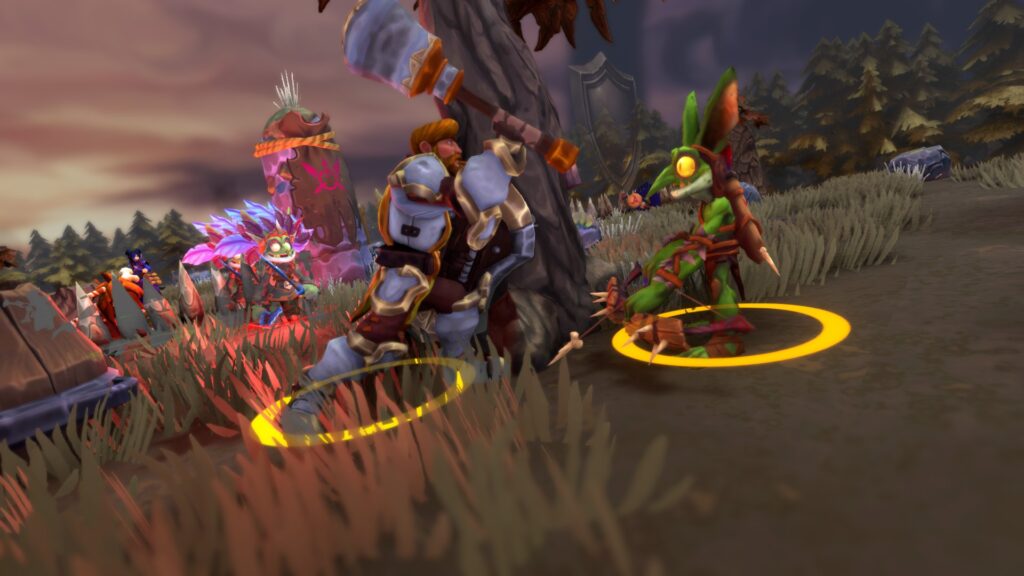
While Fort Triumph certainly has its faults, its still a very solid fantasy-themed XCOM-like. The physics-based environmental manipulation adds an interesting new dynamic to the game’s combat, and forces you to carefully consider how and where you take cover.
For me, the game’s biggest problem is it could do more to differentiate the races. Minor racial traits and buildings aside, they all still have access to the same four classes, and they just don’t play all that differently from one another.
I would have also liked to have seen more than just four hero classes. Apparently the game used to let you pad out your parties with non-hero units, and its a shame that this feature was removed.
Still, Fort Triumph has enough content and replayability to keep you hooked for a while. If you are looking for a more lighthearted and quirky take on the XCOM formula, with some really interesting physics-based combat mechanics, then you should give Fort Triumph a try.
Fort Triumph was reviewed on Windows PC using a review copy provided by All in! Games. You can find additional information about Niche Gamer’s review/ethics policy here.